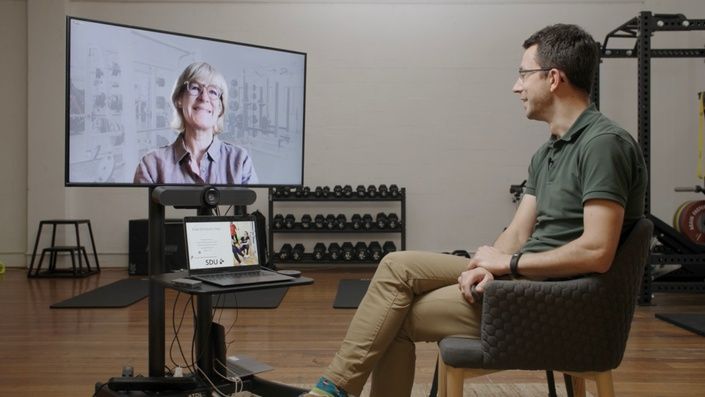Introduction
The Knee Osteoarthritis (OA) Masterclass, taught by Ewa Roos and Adam Culvenor, provides a complete overview of the assessment and management of Knee OA. This position statement provides clinically relevant, actionable information that may be useful to health professionals.
Part 1: Knee OA Overview
Knee Osteoarthritis (OA) has a huge global burden, drives high economic costs and affects over 7% of people globally. The risk factors include: age of 40+, female, overweight, prior joint injury, hard physical work, overuse in spare time and family history. The clinical symptoms include: use-related pain, functional limitations and morning stiffness. Clinical findings may involve: crepitus, restricted movements and/or bony enlargement.
- The subjective history that addresses the risk factors is important when diagnosing knee OA followed by a good physical examination.
- Earlier intervention should be implemented to try to avoid a future joint replacement.
Part 2: Treatment Options
Patients should be offered education, exercise and weight control as the first line of treatment, followed by pharmacological pain relief, aids and passive treatments as the second line and lastly, surgery as the third line.
- Clinicians should focus on increasing a patient's overall physical activity rather than solely on weight loss.
Topical NSAIDs are more effective than paracetamol, but not more effective than oral NSAIDs, however are safer. - Corticosteroid injections may provide a short term effect up to 6 weeks, but if used in the long term, can cause greater cartilage volume loss.
- It is good to begin treatment with exercise, as there is a good chance surgery can be delayed by 1 year and patients can experience clinically relevant improvements.
Masterclass Preview
Press PLAY to watch Ewa Roos and Adam Culvenor discussing different types of exercises to help manage Knee Osteoarthritis
Part 3: Exercise Therapy
Exercise therapy used to help knee OA include aerobic, strength and neuromuscular training. The education given is an integral part of treatment and should include topics such as explaining what OA is, the different treatment options, exercise and self-management tools.
- Neuromuscular exercise should be performed with supervision and feedback to allow patients to have confidence in their hip and knee.
- OA is a mechanically driven disease, so neuromuscular exercise stresses good alignment.
- Pain the day after training should subside to ‘pain as usual’ and morning pain should not increase from day to day.
Part 4: Evaluating Effectiveness of Exercise Therapy
Patient reported outcomes and functional tests are brilliant ways to assess effectiveness of exercise therapy. Outcome measures take time to complete, thus clinicians should choose the most time efficient and relevant to their patient assessments to conduct.
- The KOOS questionnaire has 5 subscales and allows the clinician to gain an overall understanding of the patient's symptoms, daily function and quality of life.
- Functional tests include chair stands, 4x10m walk test and one legged hop (optional).


